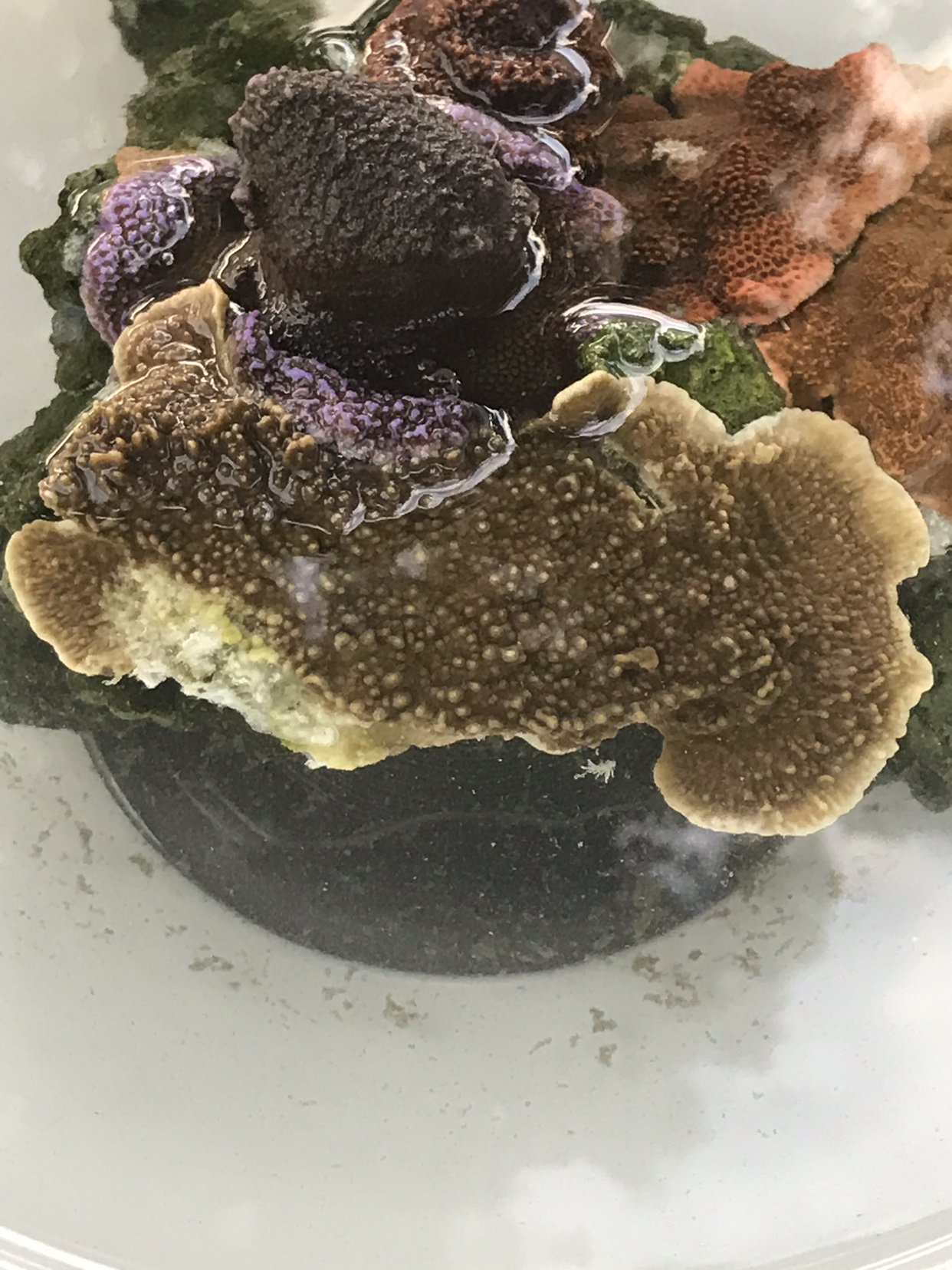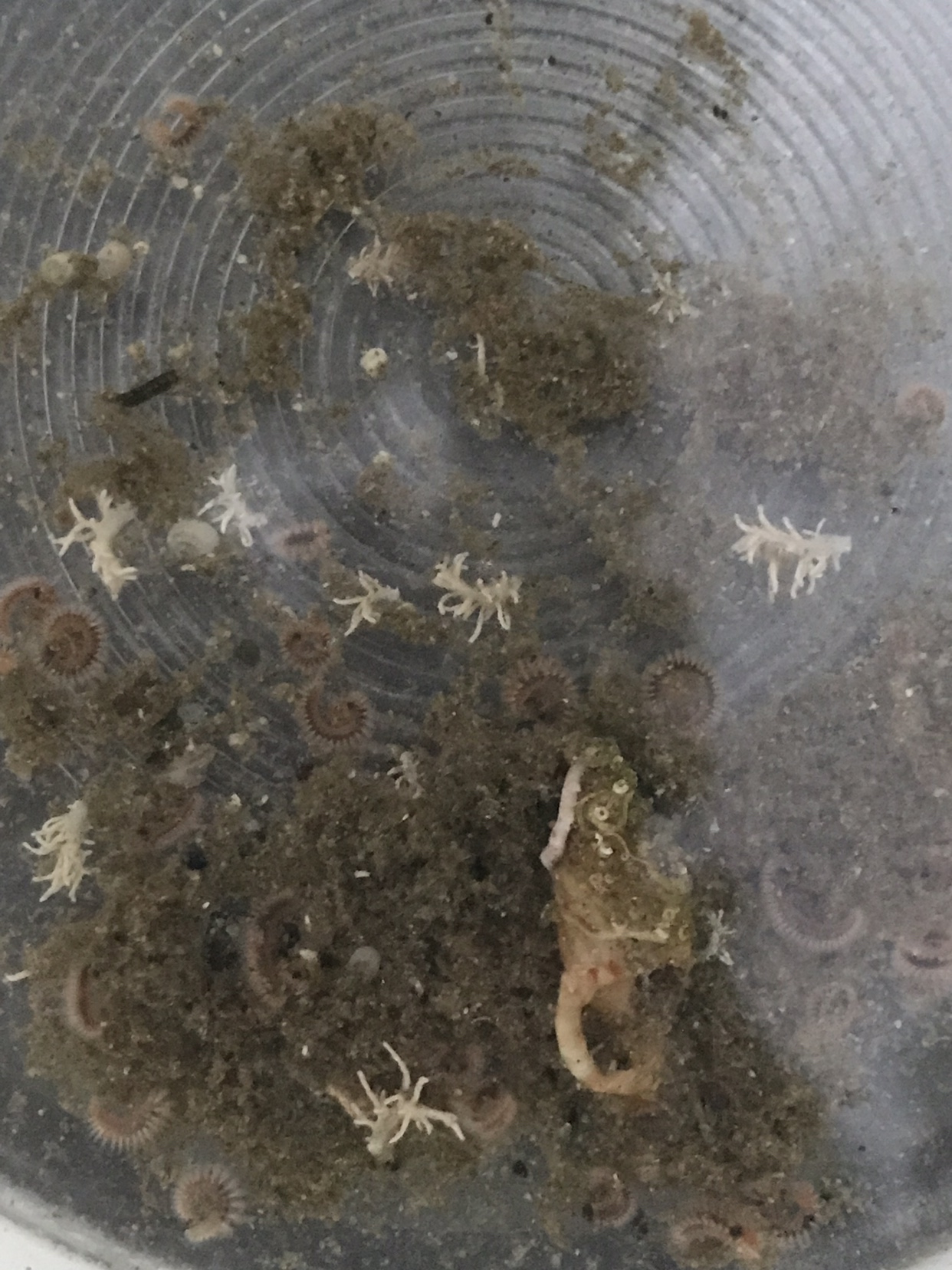That's what I thought but it was gone when I got home from work the next day.Look like a sponge!
Navigation
Install the app
How to install the app on iOS
Follow along with the video below to see how to install our site as a web app on your home screen.
Note: This feature may not be available in some browsers.
More options
You are using an out of date browser. It may not display this or other websites correctly.
You should upgrade or use an alternative browser.
You should upgrade or use an alternative browser.
What is that!! A R2R guide to common new tank hitchhikers.
- Thread starter Crabs McJones
- Start date
- Tagged users None
- Joined
- May 8, 2019
- Messages
- 70
- Reaction score
- 27
Ok. So I got this rock with a little RBTA on. There are maybe 15 Aiptasia on this rock. Is the best option to try and take the RBTA off the rock then remove the whole rock or try and kill the Aiptasia???Yes:mad:
Yes!Ok. So I got this rock with a little RBTA on. There are maybe 15 Aiptasia on this rock. Is the best option to try and take the RBTA off the rock then remove the whole rock or try and kill the Aiptasia???
- Joined
- May 8, 2019
- Messages
- 70
- Reaction score
- 27
Which one lol. Remove rock or try and treat. I bought the rock simply for the nem on it so I could try and remove the nem then take the rock out? I have a large amount of rock in sump that could replace this piece? Best way to remove the nem please??Yes!
Remove the nem then take the rock outWhich one lol. Remove rock or try and treat. I bought the rock simply for the nem on it so I could try and remove the nem then take the rock out? I have a large amount of rock in sump that could replace this piece? Best way to remove the nem please??
Look like a Nudibranch eggs.Just noticed this cobweb like growth has on my live rock. Any ideas what this is please?
- Joined
- Jan 20, 2019
- Messages
- 1,655
- Reaction score
- 1,831
Why are hydroids bad?
vetteguy53081
Well known Member and monster tank lover
View Badges
Partner Member 2024
Excellence Award
Reef Tank 365
RGB
Article Contributor
Tampa Bay Reef Keepers
West Palm Beach Reefer
Hospitality Award
Ocala Reef Club Member
305 Reef Club
Wisco Reefers
Midwest Reefer
Fish Medic
MAC of SW Florida
Rock Pool Reef Keepers
R2R Secret Santa 2023
My Tank Thread
My Aquarium Showcase
Answers the many questions weekly from members and newbies
Thank you so much for the photos that go with the names! Now I will know what to look for when I watch my tank!One of the greatest things about starting a reef tank is getting your live rock in and admiring all the diversity within it. The rock comes to life different creatures. This is a guide that I, along with a very well known critter identifier @KJ , have put together for the new reefer on what these hitchhikers are and whether they're a keeper or to pull them out.
Bristleworm -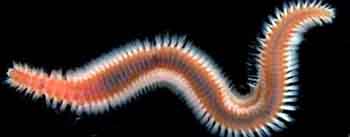
Very common good hitchhiker. The jury is out on whether they're beneficial or not. Most consider them a vital part of your clean up crew. The hide within your live rock, coming out to pick up scraps of food and other detritus. Their numbers can become overwhelming based off how much food is available in the tank. If you overfeed, and they have access to an abundance of food, their numbers will increase dramatically. Be careful not to touch as the bristles on the sides of their bodies can be very irritating and cause an allergic reaction in some.
Fireworm -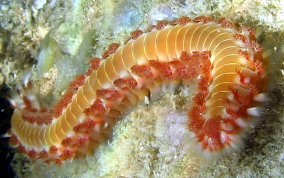
Bad hitchhiker. Similar to the bristle worm, however if stung by the bristles on this little guy, its 10 times worse. DO NOT TOUCH UNDER ANY CIRCUMSTANCES! If found it is best to remove with a trap.
Pineapple Sponges -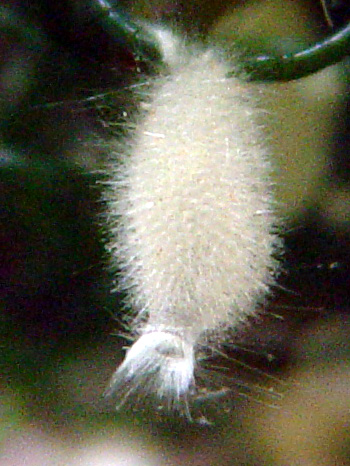
Very common good hitchhiker. These little guys are a type of sponge. They are most commonly found in overflows and in high flow areas of the sump. However, they can sometimes bee seen in shaded areas of your rockwork.
Asterina Starfish -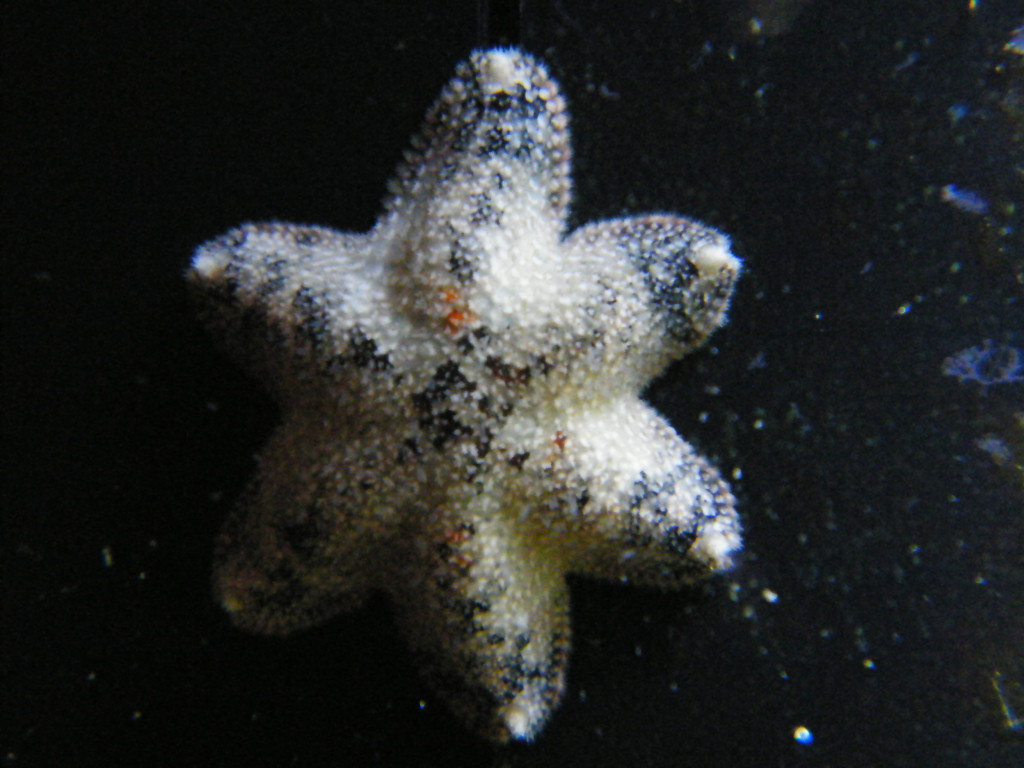
Another common neutral hitchhiker. Jury is out on these guys as to good or bad. Some people love them, some hate them. They've been rumored to munch on coralline algae. They are also known to multiply very rapidly. Manual removal when seen is best to control their numbers.
Aiptasia -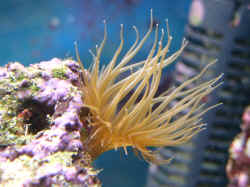
Bad hitchhiker. This is a type of anemone that multiplies very quickly, and stings and kills anything that gets near it. Depended on how many you have, they're best removed by manually scraping them off the rock, and then using epoxy/superglue/kalk paste over where they were to prevent them coming back. A few predators that you can get for them include the peppermint shrimp, berghia nudibranch, and with a large enough tank, copperband butterflyfish.
Majano -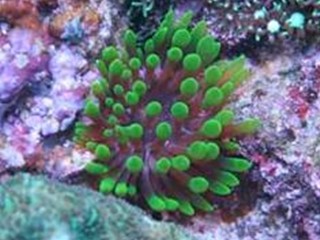
Bad Hitchhiker. This is another pest anemone that multiplies quickly and stings anything near it. Best removed by manual scraping off and super glue/epoxy/kalk past over its spot. Peppermint shrimp will reportedly consume them as well.
Vermedit Snail -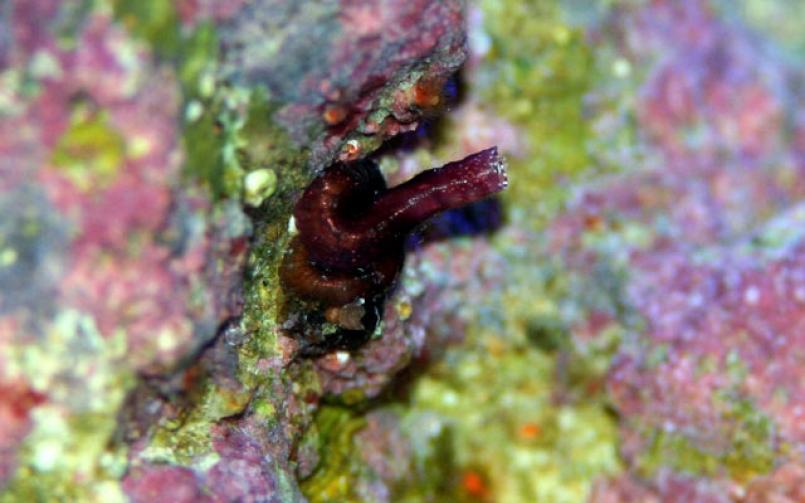
Very common neutral hitchhiker. They are generally harmless, but can multiply quickly based off nutrients in the tank, and can irritate corals. Manual removal or starving them out by putting a dab of superglue on the end of the tube is best to keep their numbers in check, as well as nutrient control.
Spirorbid Worm -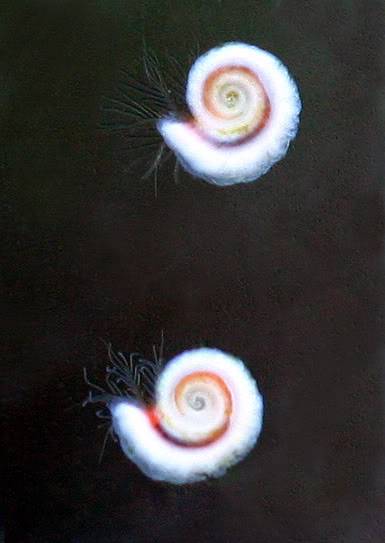
Very common neutral hitchhiker. These guys are most commonly found in overflows, and high flow areas of your sump. Can multiply very quickly and have been rumored to disrupt equipment such as pumps. Nutrient control keeps their numbers in check.
Ball Anemone -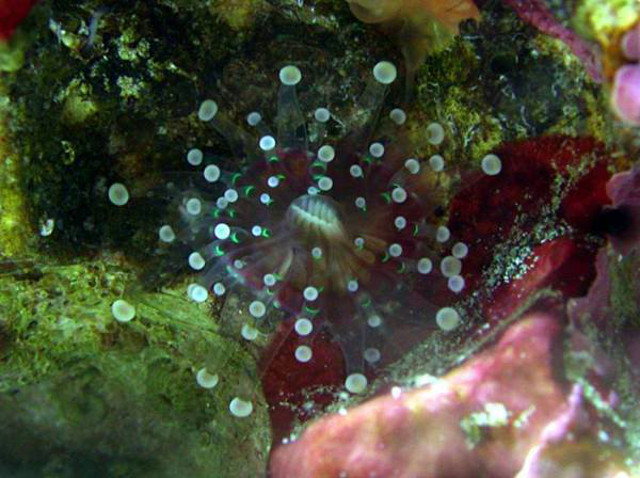
Common neutral hitchhiker. They are found in shaded areas of live rock, and tend to not bother anything and numbers are kept in check with nutrient control. Are removed by the same means as the aiptasia and majano.
Stomatella Snail -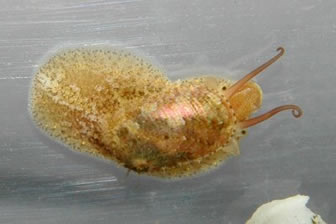
Very good hitchhiker. These guys are a great clean up crew member. They can be very elusive and most commonly found after lights out and are very fast moving. They feed off different algae in the tank.
Copepod/Isopod/Amphipod -
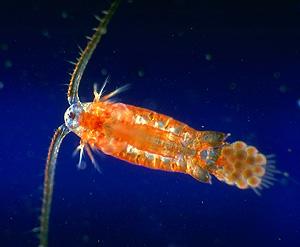

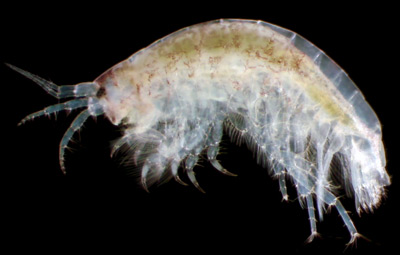
Very good hitchhikers. Often referred to as simply "pods" These little guys live within your rock work and make great food for your fish and corals. They can be the primary diet of certain mandarins.
Spaghetti Worm -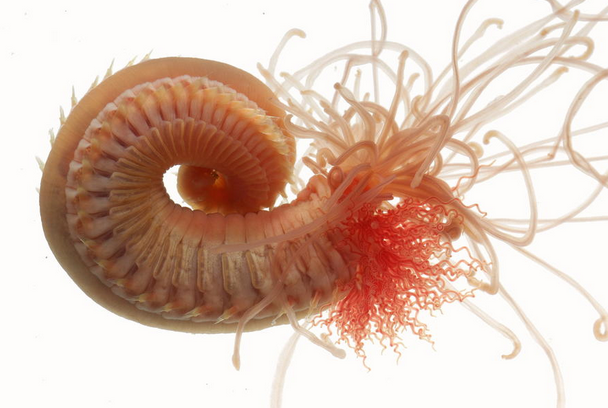
Good hitchhiker. Commonly found in the sand bed or live rock. They extend out multiple tentacles to catch floating detritus. Good member of your clean up crew.
Hydroids -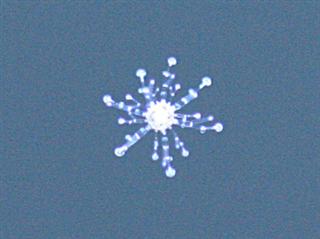

Bad hitchhikers. Good news is that they don't tend to live very long and die off on their own as the tank progresses.
Sponges -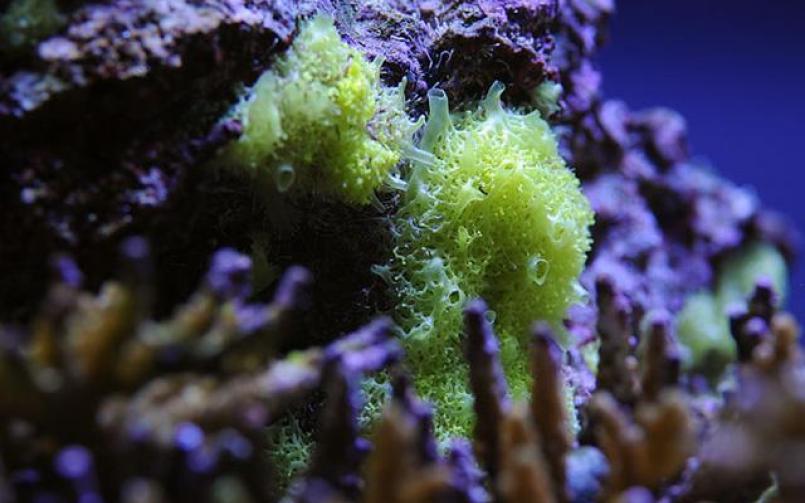
Good hitchhiker. Very common filter feeders. Found in shaded areas of live rock
Serpent And Brittle Starfish -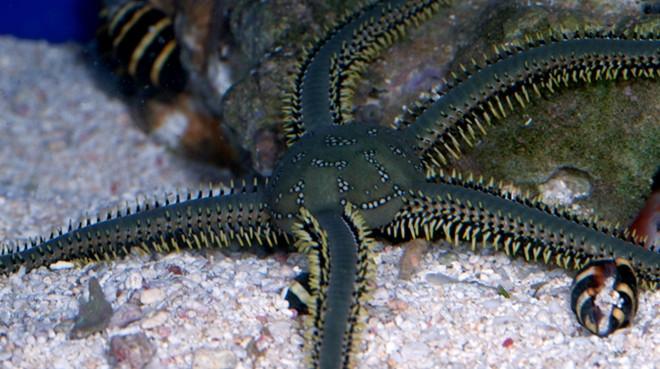
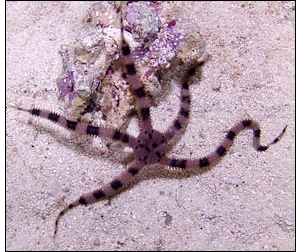
Good hitchhikers. Are most commonly found by the arms extending out from cracks and holes in rock work. Feed off leftover food and detritus in the tank.
Bobbit Worm -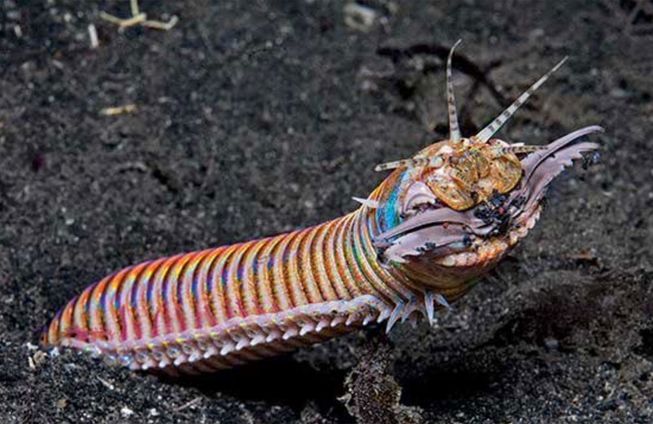
Very bad hitchhiker. These guys can grow to be very large and can kill fish. Most common means of removal is to remove the entire rock where the worm is housed. Be careful of the pincer teeth at the head of the worm.
Tunicate -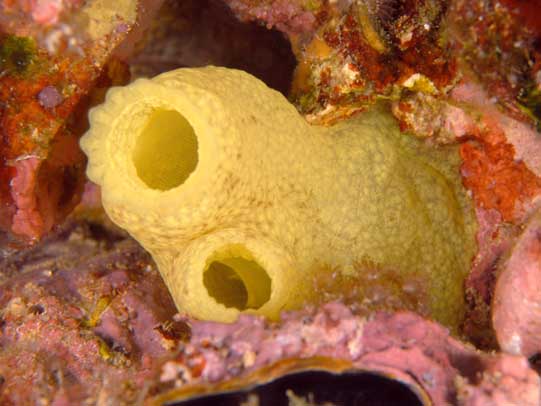
Good hitchhiker. Harmless filter feeder. At first glance looks like a sponge, except it pulses as it takes in and expels water, and reacts to touching it.
Limpet -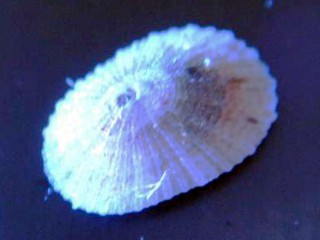
Good hitchhiker. Consumes algae. Don't seem to bother anything.
Chiton -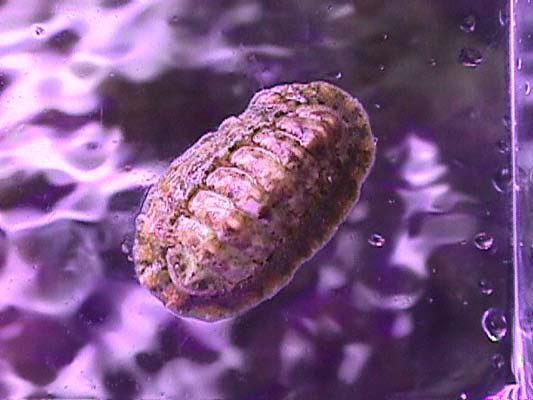
Good hitchhiker. Consumes algae. Does not appear to bother anything.
Peanut Worm -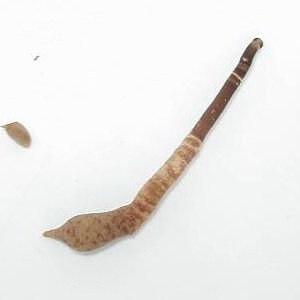
Good hitchhiker. Lives in live rock and feeds off of extra food and detritus.
Gorilla Crab -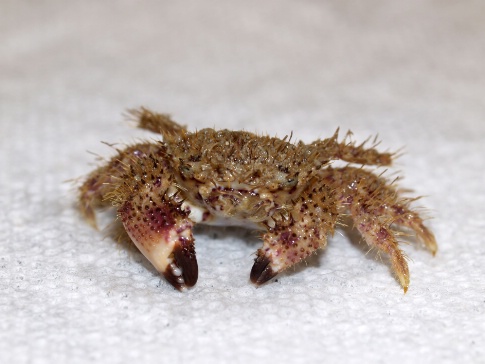
Bad hitchhiker. Can be found in live rock cracks, caves and holes. They are predatory and will hunt your shrimp and inverts. They can also grow rather large.
I did not cover Nudibranch, Snails, or Flatworms in this thread as there are far to many variations to cover. If you have an unknown, please create a thread or post it in this thread and we'll try our best to ID it for you. If you have any additions to the list please PM me and I'll review it and add to the list.
Good job @Crabs McJones. Very informative and good reference
So I picked this up at the beach on Lido Key in Florida. It was just a formless blob but it was moving so I decided to toss it in my jug with the intercostal mud and NSW and Macros that I picked up at the same beach. When I got back to Augusta, GA 4 days later, I dumped the contents of my jug in my sump. 5 days later(today) I look in my sump and there it is alive and eating my sump algae.
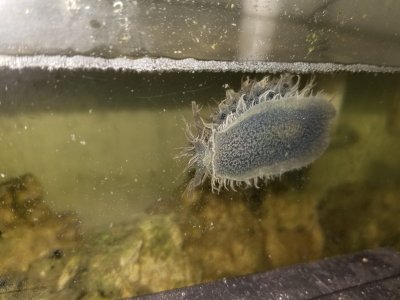
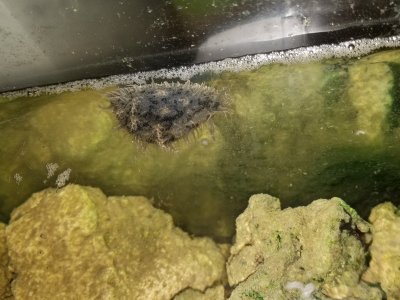 I believe it is a Ragged Sea Hare. Do you think it would be safe to rehome him to my DT?
I believe it is a Ragged Sea Hare. Do you think it would be safe to rehome him to my DT?

 I believe it is a Ragged Sea Hare. Do you think it would be safe to rehome him to my DT?
I believe it is a Ragged Sea Hare. Do you think it would be safe to rehome him to my DT?- Joined
- May 21, 2017
- Messages
- 6,123
- Reaction score
- 30,570
Looks like a cowrie snail to meSo I picked this up at the beach on Lido Key in Florida. It was just a formless blob but it was moving so I decided to toss it in my jug with the intercostal mud and NSW and Macros that I picked up at the same beach. When I got back to Augusta, GA 4 days later, I dumped the contents of my jug in my sump. 5 days later(today) I look in my sump and there it is alive and eating my sump algae.
I believe it is a Ragged Sea Hare. Do you think it would be safe to rehome him to my DT?
Crabs McJones
I'm so shi-nay
View Badges
Excellence Award
Reef Tank 365
Article Contributor
Moderator Emeritus
Hospitality Award
Reef Tank 365 Boss
Wisco Reefers
My Tank Thread
Same, maybe money or tiger cowrieLooks like a cowrie snail to me
There isn't a shell
Crabs McJones
I'm so shi-nay
View Badges
Excellence Award
Reef Tank 365
Article Contributor
Moderator Emeritus
Hospitality Award
Reef Tank 365 Boss
Wisco Reefers
My Tank Thread
Shaggy sea hare?
Similar threads
- Replies
- 11
- Views
- 471
- Replies
- 4
- Views
- 132
- Replies
- 16
- Views
- 288







